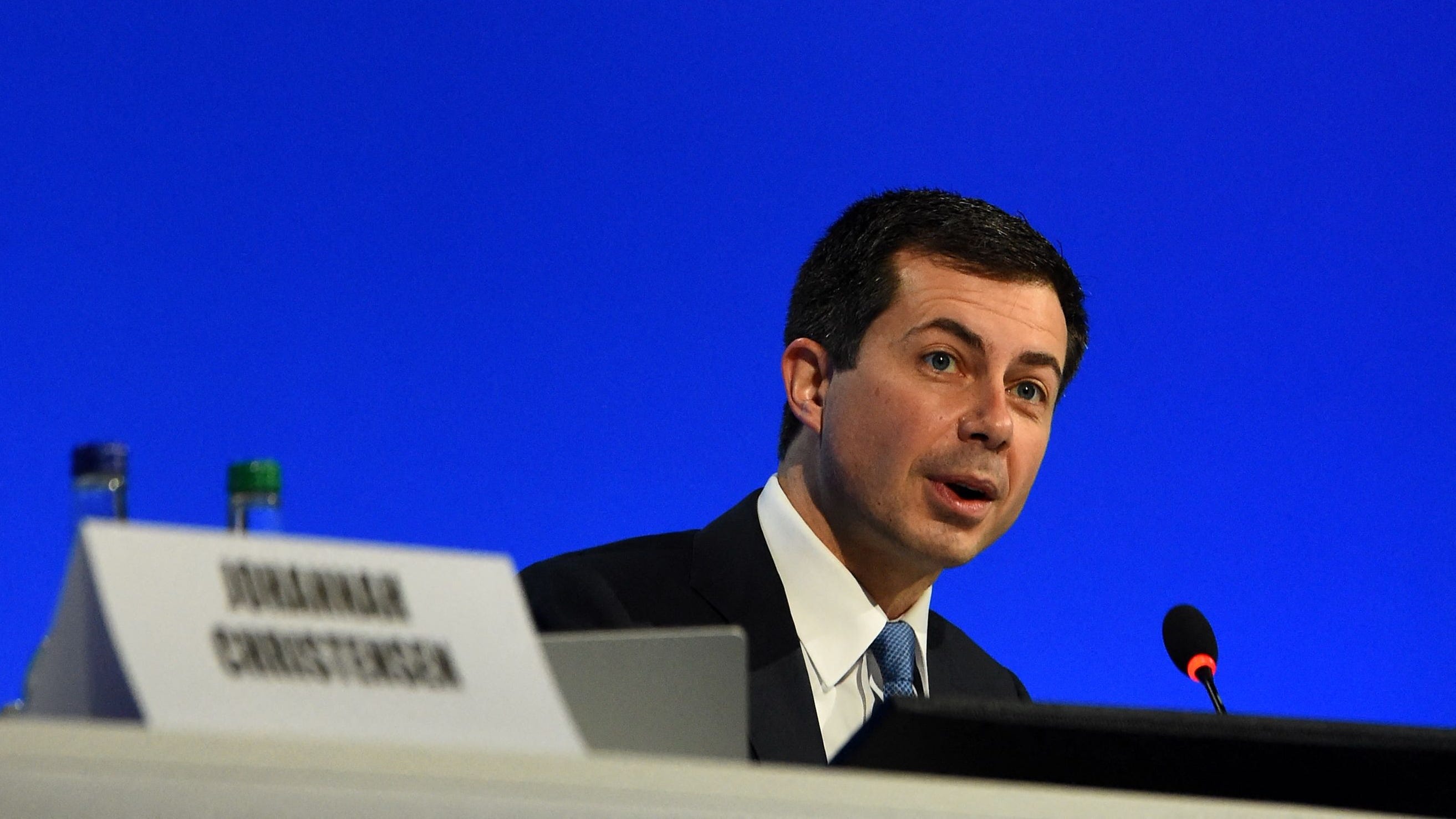From ‘Mayor Pete’ to ‘the decider’: Buttigieg to control billions in transportation spending – USA TODAY
In 2017, then-Mayor Pete Buttigieg was filling potholes in South Bend, Indiana. Now, he will oversee the largest cash infusion into the nation’s transportation infrastructure in a generation.
The $1 trillion bipartisan infrastructure bill President Joe Biden signed into law Nov. 15 includes hundreds of billions of dollars that Buttigieg will oversee as the nation’s transportation secretary, a role he began less than 10 months ago.
By itself, the discretionary funding that his department will dish out to repair roads, rebuild bridges and expand public transit eclipses what any previous U.S. Department of Transportation secretary has had at their disposal, several times over.
It’s a long way from 2017. Back then, Buttigieg’s city spent about $175 million – with an “m” – on the entirety of its government operations. When the freezing and thawing of a northern Indiana winter opened craters on South Bend’s roads in January that year, Buttigieg joined a road crew to personally repair potholes.
“The pothole is the natural enemy and prey of every mayor,” Buttigieg tweeted alongside a photo of him packing patch into the space where the asphalt had split.
It was the kind of political stunt that Buttigieg would recycle in his 2020 campaign for president. Now, the man whom a White House official jokingly referred to as “Secretary Mayor Pete” will be tasked not just with choosing which potholes to fill but which projects receive a slice of the billions in new transportation investment.
“It’s a huge undertaking,” said Jeff Davis, senior fellow at the Eno Center for Transportation.
Buttigieg is ‘the decider’
Most of the money Buttigieg’s department will send out is calculated by complex formulas laid out in the law. State and local governments receive that funding and decide how to spend it.
About $120 billion is for discretionary grants the department will award for specific transportation projects around the country. The discretionary grant pool is “at least four times, maybe five times, as much money as any previous secretary,” Davis said.
“We’re talking about a sum that is incomparable to the discretion they have had in past years,” said Yonah Freemark, senior research associate at the Urban Institute.
Buttigieg and other political appointees who answer to him will develop the criteria for awarding those grants, interpret gray areas in the law and determine how to balance the amounts of money going to each mode of transportation.
“All of these things are in the eye of the beholder and, for at least the next few years, Secretary Buttigieg is the beholder,” Davis said.
Put another way, former Transportation Secretary Ray LaHood said Buttigieg is “the decider.” That means he will pick the winners and the losers.
LaHood said Buttigieg’s experience running a city and interacting with other mayors who understand local transportation needs puts him in a good position to handle that role. He also will have plenty of help.
More: A ‘game changer’? Mayors, governors ready to compete for $1 trillion in infrastructure funds
As South Bend’s mayor, Buttigieg had 55 workers in the highway and streets division. The U.S. Department of Transportation has 55,000 employees, and Buttigieg said during a Nov. 8 briefing with reporters at the White House that the department will need to hire more to deal with the wave of new money.
“These people have been waiting a long time to have this kind of opportunity to really improve infrastructure,” LaHood said.

Prioritizing equity and climate change
LaHood was transportation secretary the last time the department received a bounty of new cash. The 2009 stimulus bill to revive the sagging economy included $48 billion for transportation.
Teams worked 18-hour days to handle the influx of applications for that funding, he said. LaHood met with them weekly to decide which projects would be funded.
“Even with that amount of money, it really does pale in comparison to what we’re looking at now,” Jim Tymon, executive director of the American Association of State Highway and Transportation Officials.
Bipartisan infrastructure bill now law: ‘We’re finally getting this done’: Biden signs landmark infrastructure package in major win for domestic agenda
Shifting administration priorities can make it difficult for transportation planners to map out projects that can compete for discretionary grants, Tymon said, but they have plenty in the pipeline to spend the available funding.
During President Barack Obama’s administration, more discretionary grants went to urban areas, Tymon said. That shifted under former President Donald Trump to rural projects and those that improved the flow of freight.
Tymon said he expects another shift under Biden, with more discretionary funding going to projects that address climate change and racial equity, as the administration has laid out in its policy priorities.
That already was happening, even before Congress approved the new money. Buttigieg told White House reporters that the department has been using existing grant programs to tackle its policy priorities.
“What you’re going to see – within the framework, of course, that the law puts forward – is an emphasis on projects that, taken together, give us extra value in the priorities of this administration: economic strength, safety, climate, equity, preparing for the future,” he said. “And we see a lot of projects that overlap in that sense.”
For instance, the department announced Friday it was awarding $1 billion in grant funding for 90 transportation projects in the U.S. and Guam. Those included several projects that addressed environmental impacts and issues of equity.
The $1 billion in grant funding, though, only covered a fraction of the $10 billion applicants requested. In the bipartisan infrastructure bill, that program will bump up to $1.5 billion.
The department is trying to infuse its policy priorities across the different discretionary grant programs to maximize its ability to fund those projects, a senior official in the Department of Transportation said during a call with reporters.
In the latest round, a $25 million grant will help New Mexico rebuild a 21-mile portion of Rt. 64 in the northwest portion of the state through the Navajo nation. One piece of that project will be to improve drainage to reduce runoff during “climate disasters,” the official said.
Another $900,000 will help Atlanta plan a cap for the I-75/85 connector that fragmented some communities from the city’s downtown. When construction is complete, a 14-acre greenspace will sit atop the highway interchange.
A key difference between previous funding windfalls and the new infrastructure funding is the time horizon.
Formula funding that goes to states and local governments could put shovels in the ground faster. But Buttigieg’s department also will have to develop new programs for some discretionary funds.
Davis said the 2009 stimulus funding was meant to be put to work quickly, whereas the new infrastructure money is designed to trickle out over five years. Buttigieg described it as both short-term and long-term.
“We’re talking about years of decision-making on the part of the DOT secretary and making choices about what kind of projects they want to fund,” Freemark said. “Ultimately, those choices are going to play a big role in influencing how local communities change their transportation system in the coming years.”



